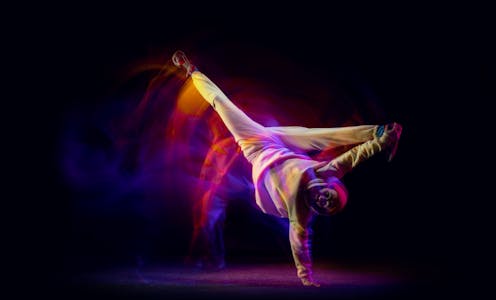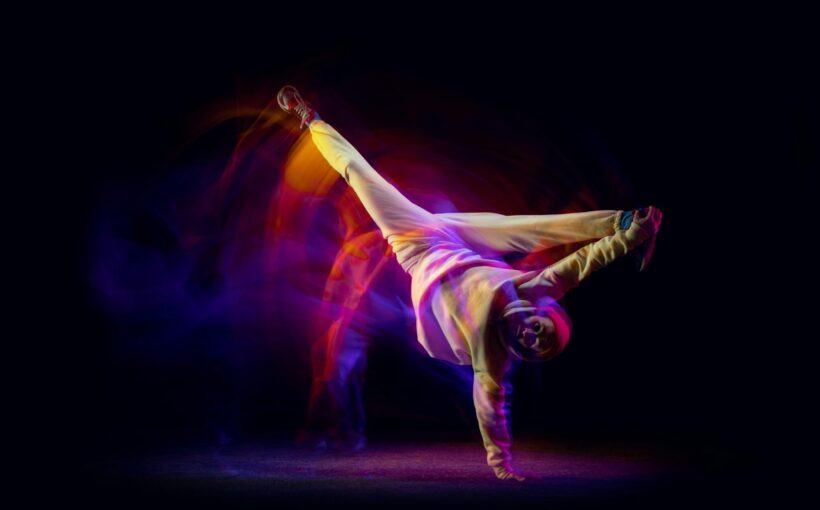
Break dancing has at last made it to the Olympic Games. This acceptance by the most exclusive of sporting institutions has been a long time in the making. Break dance promoters first mooted its inclusion in the early 1980s.
Break dance is an artform based on martial arts and dance that originated in the working and underclass culture of New York in the late 1960s and early 1970s.
The acceptance by the Olympics has elevated it to an acceptable and established form of performance athletics, which also includes ice skating, synchronised swimming and diving, as well as the recently included sports of skateboarding and snowboarding.
Break dancing has also always been a highly competitive, physically demanding art form. Those of us who grew up in the 1980s can’t forget body popping and break dancing battles in the clubs of even our most unglamorous cities.
Because of its origins, break dancing was often paired with rap and scratch music, which itself became a competitive art form with impromptu battles becoming legendary in the 1990s.
There seemed to be few rules to these battles in the early years, or at least few written rules. Because break dancing wasn’t linked to an institution or membership organisation, anyone of almost any background could compete to gain acceptance. This gave break dance a sense that it was for everyone, and that anyone had the potential to succeed at it, no matter who they were or where they came from.
Despite these egalitarian beginnings, break dancing has not made it to the Paralympic Games, the alternative form of the Olympic Games developed to celebrate sport by people with disabilities.
It is a sad reality that, all too often, people with disabilities are excluded from such art forms, particularly younger people who are born with a disability. These young people are often tacitly excluded from this dance culture (despite the occasional tokenistic appearance of disabled celebrity dancers) because of its image of physical perfection and extreme, unrestricted movement.
It is with this exclusion in mind that some contemporary break dancers have founded a series of projects that seek to include people with physical disabilities, particularly those with visual impairments. Break dance can help with balance and teach ways to fall safely, both of which are helpful for people with visual impairments.
In a participatory break dancing project I took part in just prior to lockdown, people with visual impairments in South Yorkshire in the UK were brought together with a group of professional break dancers. Together, they co-designed choreography, dance skills and an accessible music technology keyboard. This project aimed to encourage visually impaired break dancers to touch and hear dance movements to learn their art form.
Although the visually impaired young people involved in the project had never tried break dancing before enrolling, they adapted the techniques and skills to their needs. Over the course of a number of weeks, they showed greater physical confidence.
During the project, the amateur break dancers adapted well to the technology. Audio description techniques devised to provide onomatopoeic representations of dance moves allowed them to imagine and then communicate choreography and design whole dance sequences. Onomatopoeic representations are sounds that represent the “shape” and “movement” of dance moves as precisely as possible.
The professional dancers were also genuinely surprised by the way that they could integrate their choreography and dance routines and appreciated the adapted music technology. Importantly, working together with the technology and the newly adapted techniques helped the visually impaired participants gain a sense of social acceptance among the group.
Projects like this show that people with physical disabilities are capable of materially and psychologically choreographing dance moves as well as dancing themselves. In light of this, break dance culture should now do more to embrace marginalised groups such as people with disabilities, who have been excluded from the competitive element of this art form for far too long.
It is true that we have a long way to go to find the number of people with physical disabilities who have developed the skills that are needed to compete at an elite level. However, it is only when break dance is introduced into the Paralympic Games too that it can be called a truly inclusive, as well as an elite, sport.
![]()
Simon Hayhoe is affiliated with the British Computer Society.



